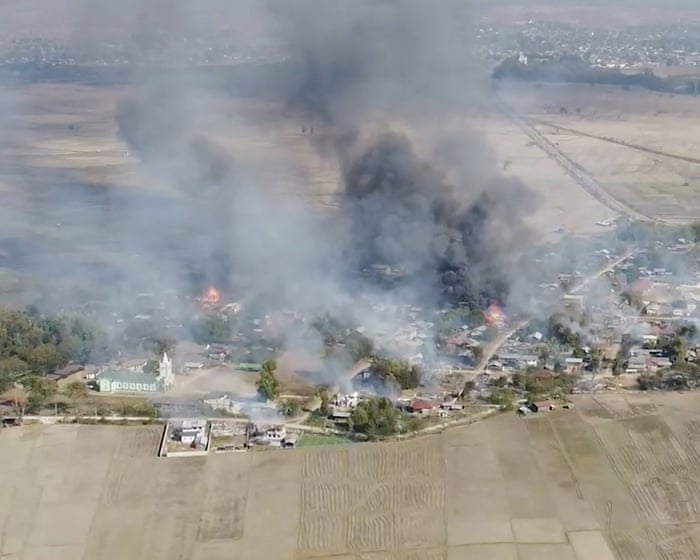Ny forskning avslöjar att Myanmars militär använder avancerad europeisk teknologi för att skydda sin drönarflotta samtidigt som de utför våldsamma flyganfall. Detta har lett till krav på hårdare sanktioner mot den styrande juntan.
En rapport från Conflict Armament Research (CAR) visar att Myanmars militär, som är starkt kritiserad för slumpmässiga attacker mot civila, har förvärvat europeisk "anti-jamming"-teknologi via ett kinesiskt företag. Forskarna dokumenterade nedskjutna militära drönare i östra Kayah-staten som var utrustade med sofistikerade navigationsmoduler som förhindrar signalstörningar. Liknande teknologi hittades även i västra Chin-staten.
CAR noterade att Myanmars militär har modifierat dessa drönare med vapenutlösningsmekanismer, vilket gör dem till beväpnade flygfarkoster.
Sedan kuppen 2021 har Myanmar varit indraget i konflikt, där antijuntastyrkor och etniska beväpnade grupper tagit kontroll över stora gränsområden. Under det senaste året har juntan satsat kraftigt på drönarteknologi för att bekämpa oppositionsgrupper, som själva har använt sådana vapen effektivt. Enligt konfliktövervakningsdata rankas Myanmar nu som tredje i världen för drönarrelaterade incidenter, efter Ukraina och Ryssland.
EU har infört vapenembargon mot Myanmar sedan 1990-talet, med sanktioner som utökades 2018 på grund av militärens övergrepp mot minoriteter som rohingyorna. Ytterligare restriktioner följde efter kuppen 2021. Aktivister menar dock att sanktionerna fortfarande är otillräckliga och inkonsekvent tillämpade mellan EU:s medlemsstater.
Yadanar Maung, talesperson för Justice For Myanmar, sade att CAR:s resultat inte var överraskande och pekade på tidigare export av kommunikationsutrustning, spionprogram, drönardelar och marin teknik till juntan. Hon krävde strängare EU-sanktioner för att strypa militärens tillgång till pengar, vapen och flygbränsle.
Robert Hunter Perkins, forskningschef på CAR, noterade att drönarkrigföring utgör en utmaning för beslutsfattare på grund av den snabba teknologiska utvecklingen. Kommersiell drönarteknologi har överträffat regelverkens kontroll, vilket gör efterlevnad svår.
CAR:s rapport identifierade inte tillverkaren eller det europeiska landet bakom anti-jamming-teknologin. Tillverkaren uppgav att de gjort allt för att förhindra missbruk av sin produkt. Trots att produkten var känslig klassificerades den inte som militär- eller dubbelanvändningsvara och var därför inte föremål för exportkontroller.
I mars 2023 skickade tillverkaren produkten till en godkänd distributör i Kina. Denna distributör inkluderade den senare i en större leverans till ett annat kinesiskt företag som monterar drönarkomponenter. I mars 2024 hade detta företag sålt varorna till ett företag i Ruili – en viktig handelsstad vid Kinas och Myanmars gräns.
Det finns inga bevis för att distributören eller monteringsföretaget gjort något fel. Forskarna noterar dock att slutköparens placering – nära ett område med ökad konflikt – borde ha väckt oro.
Perkins betonade vikten av att använda fältforskning, som den som samlats in i konfliktzoner, för att upptäcka varningssignaler, underrätta tillverkare och förhindra framtida avvikelser.
Rapporten underströk också behovet av kontinuerlig övervakning för att säkerställa att sanktionerna förblir effektiva.




